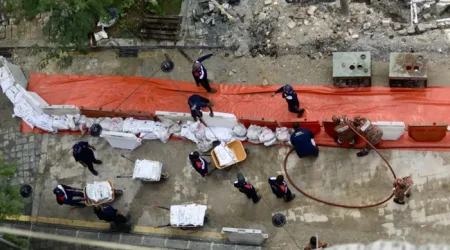Southern Philippine province rocked by more than 1,600 aftershocks
MANILA: More than 1,600 aftershocks have jolted a southern Philippine province following a magnitude-7.4 earthquake that left at least one dead and hundreds of houses and buildings damaged, officials said on Monday (Dec 4).
The aftershocks included a magnitude-6.8 quake that struck at 3:49am on Monday (1949 GMT Sunday) in Cagwait town in Surigao del Sur province, about 100km from Hinatuan town, the epicentre of Saturday’s tremor.
The Philippine Institute of Volcanology and Seismology (Phivolcs) said it has so far recorded 1,692 aftershocks since Dec 2.
People should expect more aftershocks in the next few weeks, but the tremors would become weaker and less frequent, Phivolcs director Teresito Bacolcol said in a television interview.
Bacolcol urged affected residents not to enter their houses if they are damaged.
“They should stay in evacuation centres and consult with civil engineers if it is already safe to go back to their houses,” he said.
“If there are visible cracks or visible damage, if their houses didn’t collapse during the main shock, it might collapse when a strong aftershock hits.”
The national disaster agency has so far recorded one death. A pregnant woman died after a wall of a collapsed house fell on her in Tagum City in Davao Del Norte province. There have been four reports of injuries from the earthquake.
Two bridges were damaged and remain impassable, while power was restored in most affected areas.
Footage on social media showed bottles and other merchandise falling off shelves at a convenience store, and staff rushing out of a coffee shop as the quake rattled the establishments.
People rushed out of buildings in panic, and customers of a bar screamed and prayed as tables and chairs violently shook during the earthquake. One piece of footage showed the ground swelling in a parking lot.
The Philippines is located on the Pacific Ring of Fire, where about 90% of the world’s earthquakes occur.
One of the strongest quakes to hit the country was in July 1990, when more than 2,400 people were killed on the northern island of Luzon in a 7.8-magnitude earthquake. – dpa













Leave a Reply